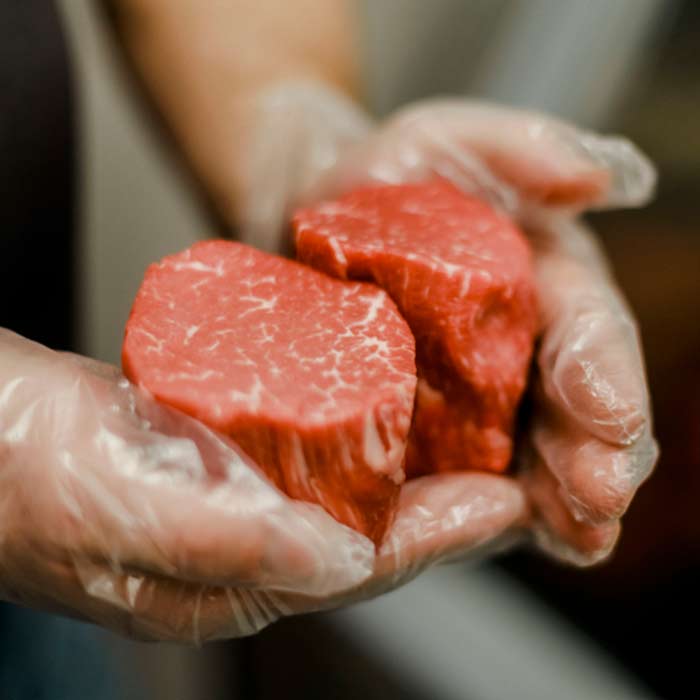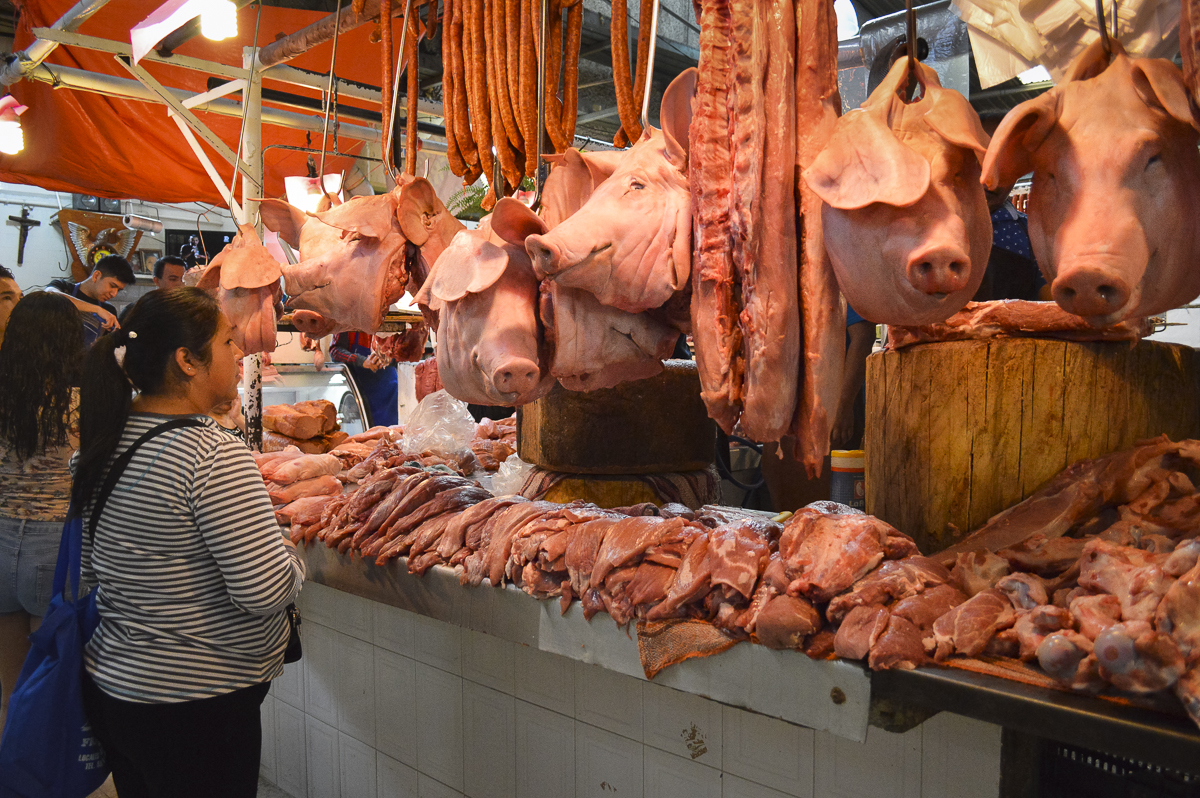Top Reasons to Patronize Bagley Farms Meat Market Edwardsville IL for Costs Meats
Top Reasons to Patronize Bagley Farms Meat Market Edwardsville IL for Costs Meats
Blog Article
Discover the Art of the Butcher's Cut in a Modern Meat Market
In the ever-evolving landscape of modern-day meat markets, the butcher's cut has transcended its conventional origins, combining old-time workmanship with modern practices. What really establishes the modern-day butcher apart is their capacity to create a deeper link in between customers and the origins of their meat.
Advancement of Butchery Strategies

The mid-20th century saw butchery strategies further improved by clinical insights right into muscle mass biology and meat aging, improving both inflammation and taste. Developments like vacuum packaging and refrigeration extended item shelf-life, permitting butchers to branch out offerings and boost quality control. This period also marked the surge of specialized equipment, such as band saws and meat slicers, which boosted precision and effectiveness in meat processing.
The 21st century has presented digital innovation into the butchery realm. Computerized systems now help in monitoring pet provenance and maximizing cuts to meet specific customer choices. Furthermore, a resurgence in artisanal butchery has actually arised, mixing standard skills with modern-day knowledge to deal with customers seeking moral and sustainable meat options. This advancement emphasizes a dynamic interaction in between tradition and advancement, meeting contemporary needs while maintaining the craft's heritage.

Understanding Meat Cuts

Comprehending the complexities of meat cuts is important for both butchers and customers seeking high quality and worth. Each cut originates from a various part of the pet, imparting unique tastes, appearances, and food preparation techniques. Proficiency of these differences not only enhances cooking experiences but additionally makes the most of the energy of each carcass. For butchers, accurate cuts show ability and regard for the craft, ensuring very little waste and optimal return.
The key classifications of meat cuts include primitive, sub-primal, and retail cuts. Butchers after that damage these down further into sub-primal cuts, before lastly creating retail cuts readily available to customers, like ribeye or tenderloin.
Understanding muscle mass structure is critical; muscular tissues utilized more regularly by the pet often tend to be tougher and are best matched for sluggish cooking methods, while less-used muscles, like those located in the loin, are extra tender and suitable for barbecuing or roasting. Familiarity with these differences encourages consumers to make educated choices, enhancing their culinary ventures.
Picking High Quality Meat
Picking the right meat entails greater than simply selecting an aesthetically enticing piece from the display. The art of choosing high quality meat requires a critical eye and knowledge of specific characteristics that represent freshness and quality. Pay attention to the his explanation color; beef ought to have an intense, cherry-red shade, while lamb ought to display a soft pink tone, and pork a pale pink. This indicates the meat is fresh and hasn't been subjected to oxygen for as well lengthy.
Secondly, take into consideration the marbling, which refers to the white streaks of fat within the muscle mass. Appropriate marbling is an essential indicator of tenderness and flavor, as it melts throughout cooking, boosting the meat's juiciness. Keep in mind, greater marbling usually correlates with premium top quality cuts, such as USDA Prime.
Appearance is an additional crucial factor; meat needs to really feel firm to the touch, not slimy or excessively soft. Additionally, be mindful of the fragrance. Fresh meat needs to have a tidy, neutral scent, devoid of any kind of sour or repulsive odors.
Pairing Cuts With Cooking Techniques
Effectively combining cuts of meat with the appropriate food preparation approaches is necessary for attaining optimal flavor and structure. Different cuts vary in inflammation, marbling, and connective cells web content, each calling for details methods to unlock their capacity. Tender cuts like filet mignon and ribeye, with their integral marbling, advantage from high-heat, quick-cooking methods such as grilling or pan-searing. These methods enhance the meat's all-natural tastes and make certain a juicy coating.
Alternatively, harder cuts like brisket and chuck roast are abundant in collagen, which breaks down right into jelly when cooked gradually. These cuts are excellent for braising or sluggish roasting, allowing the meat to tenderize in time and develop deep, intricate tastes. Similarly, cuts such as short ribs and pork shoulder prosper with slow-cooking approaches, where extended cooking times transform their robust structures into succulent recipes.
Lamb shanks pop over here and oxtail, which need extended cooking to tenderize, are ideal candidates for cooking or slow simmering. These methods coax out rich, passionate flavors while maintaining wetness. By comprehending the special qualities of each cut, cooks and home chefs alike can boost their cooking productions, making sure each meal is both pleasing and unforgettable.
The Butcher's Function Today
Navigating the progressing landscape of the modern-day meat market, the butcher's role today expands beyond simple prep work of cuts. Contemporary butchers are cooking artisans, instructors, and supporters for lasting techniques.
Along with crafting specific cuts, butchers currently engage straight with consumers, supplying cooking advice and tailoring selections to fit individual demands and preferences. Their experience in meat aging, marbling, and taste accounts empowers consumers to make enlightened decisions, improving their culinary experiences. This personalized solution exhibits the butcher's progressing role as a relied on expert in the cooking area.
Moreover, butchers are essential in decreasing waste, using entire animals to produce varied items such as sausages and supplies - bagley farms meat market edwardsville il. This detailed approach not just appreciates the pet however likewise straightens with contemporary sustainability objectives. This way, the modern-day butcher symbolizes both custom and innovation, adjusting to an ever-changing market while protecting the virtuosity and honesty of their craft

Verdict
Proficiency in understanding diverse meat cuts and top quality indicators empowers why not find out more butchers to give educated suggestions, aligning details cuts with optimum cooking approaches. By honoring historic techniques while welcoming modern needs, the butcher's role remains important in today's advanced meat market.
Report this page